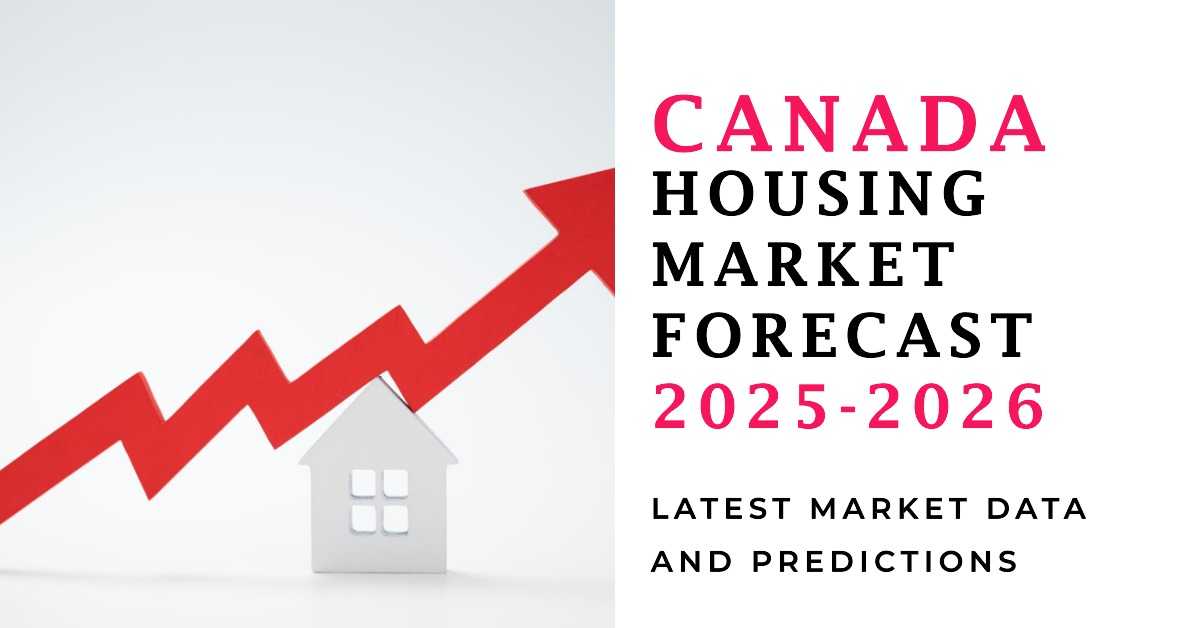Real estate in Canada has always been one of the most trusted ways to build wealth. But things are changing.
In 2025, property prices are no longer climbing the way they used to. Higher interest rates, lower demand, and slower construction are reshaping the market.
If you’re planning to buy property for living or investment, this guide will help you understand what’s going on, what’s risky, and where the best opportunities may be.
The Current Situation
Across Canada, property prices have cooled down compared to the boom years.
According to the Canadian Real Estate Association (CREA), the average home price is now around $670,000 to $680,000, depending on the province.
Prices are slightly down in most large cities:
- Toronto: expected to drop around 4% this year.
- Vancouver: prices likely down about 2%.
- National average: down roughly 1.5% from last year.
In smaller cities and rural areas, prices have remained more stable.
Overall, the market isn’t crashing—it’s just slowing down and finding balance.
Why Prices Are Changing
Several things are affecting the Canadian real estate market in 2025.
1. Higher Interest Rates
Mortgage rates went up during 2023–2024 to control inflation.
That made monthly payments more expensive and reduced how much buyers could borrow.
Even though rates may start to drop slightly this year, borrowing costs are still high compared to a few years ago.
2. Less New Construction
Builders are slowing down because of high costs and lower demand.
Condo projects in Ontario and British Columbia have been delayed or canceled, and fewer new homes are being built overall.
3. Economic Slowdown
Global trade issues, inflation, and slower job growth have also made buyers more cautious.
Investors are waiting to see how the economy performs before making big moves.
4. Regional Differences
The market is not the same everywhere.
- The Prairie provinces (like Saskatchewan and Manitoba) are showing more stability.
- Quebec has also stayed steady.
- Ontario and B.C. are softer because prices were already very high and borrowing costs hit buyers hardest there.
What Property Investors Are Focusing On
Even in a slower market, smart investors can find opportunities. Here are a few areas doing well:
1. Rental Properties
Apartments and multi-unit rentals are still strong because housing demand remains high.
Rental prices are increasing, especially in cities with immigration growth like Toronto, Calgary, and Halifax.
For investors, rental properties can provide steady income even when property prices are flat.
2. Industrial Real Estate
Warehouses and logistics spaces are in high demand thanks to e-commerce and supply chain needs.
Many investors see this as a safer, long-term investment because tenants tend to sign longer leases.
3. Secondary Cities
Smaller cities and mid-size markets offer lower prices and decent rental returns.
Examples include places like Regina, Moncton, and Kelowna—areas that have lower entry costs but strong population growth.
4. Real Asset Investments
Some investors are exploring “real assets” like data centers, cold storage, and renewable energy infrastructure.
These combine technology and property and are expected to grow over the next decade.
Main Risks to Watch
While opportunities exist, investors should be aware of the risks in 2025.
- Interest rate changes – If rates rise again, prices could drop further.
- Vacancies – In weak markets, rental demand can soften, leading to empty units.
- Overbuilding – Some regions still have too many condos, which can push rents and prices down.
- Government rules – Taxes and housing restrictions (like foreign buyer bans or vacancy taxes) may affect profit.
- Economic slowdown – If unemployment rises, fewer people can afford to buy or rent at high prices.
Tips for Investors
If you’re thinking about buying property in Canada, keep these points in mind:
- Research local markets instead of relying only on national data. Real estate is hyper-local.
- Calculate cash flow carefully. Don’t assume prices will always go up.
- Diversify across property types or provinces if possible.
- Choose fixed mortgage rates if you want stability.
- Plan for maintenance and taxes. Real returns depend on managing expenses well.
- Stay updated on policy changes from the Bank of Canada or CMHC.
A good investment plan focuses on steady income, not quick profit.
Property Price Outlook for 2025–2027
Economists expect the next two years to be a period of mild recovery.
If interest rates slowly decline, activity will likely pick up again by late 2025 or early 2026.
- Prices: May rise slowly (1–3% per year) in most provinces.
- Sales volume: Expected to improve gradually as buyers return.
- Strong regions: Alberta, Saskatchewan, Quebec, and Atlantic Canada.
- Weaker regions: Ontario and B.C. may stay flat for longer.
- Rental demand: Still strong in cities with job and immigration growth.
So while short-term profits might be limited, long-term investors with patience can still do well.
Final Thoughts
The Canadian property market in 2025 is cooling but not crashing.
Prices are more realistic, and buyers finally have time to make smarter decisions.
For investors, this can be a good time to enter the market—if you focus on rental income, location quality, and long-term value rather than quick flips.
If interest rates start dropping, property values could rise again, and those who buy during the slowdown might benefit the most.
In simple words:
Canada’s real estate market is maturing. The easy money days are over, but opportunities are still there for people who think long term and choose wisely.

